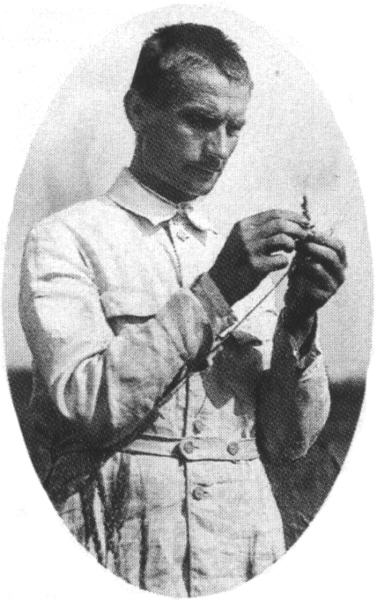 sounds familiar? fraudulent Science coming from the Left? try Maoist China
sounds familiar? fraudulent Science coming from the Left? try Maoist China
http://www.applet-magic.com/lysenkoism.htm "Jasper Becker in Hungry Ghosts traces the foolishness of close planting to the fraudulent science of the Soviet Union. T.D. Lysenko was a quack who got the support of Joseph Stalin and ruled over Soviet genetics for twenty five years. Among the many erroneous notions promoted by Lysenko and which had to be accepted in Marxist countries was his Law of the life of species which said that plants of the same species do not compete with each other but instead help each other to survive. This was linked to the Marxist notion of classes in which members of the same class do not compete but instead help each other survive. So Marxist ideology seemed to support the notion that the denser grain is planted the better it is for the grain. But in reality this close planting led to whithering of the plants after the initial germination phase. Lysenko was responsible for many other foolish notions most based upon the precept that environment not genetics determine plant characteristics. Lysenko argued that if you grew plants a little farther north each year they would adapt to the climate and eventually you would be able to grow oranges in the arctic. All of the Lysenko nonsense had to be accepted in the Soviet Union and promoted in propaganda as scientific truth. The Marxists in China apparently believed it was the truth. The reality was that this nonsense resulted in diminished production of food under conditions of bare survival."
In 1927, less than ten years after the 1917 Revolution within in the old Czarist Russian Empire that led to the formation of the Soviet Union, Lysenko observed that pea seeds germinated faster when the seeds were maintained at low temperatures. Lysenko mistakenly concluded that the low temperature forced an alteration in seed species. In fact, what was occurring was simply the result of the natural variation in the ability of seeds to grow and thrive in colder temperatures.
Lysenko's conclusions were based upon the teachings of Russian horticulturist I. V. Michurin (1855-1935), who was a proponent of the widely discredited Larmarckian theory that organisms evolved through the acquisition of traits that best adapted them to their environments (evolution by acquired characteristics). During the 19th century, French anatomist Jean-Baptiste Lamarck (1744-1829) had attempted to explain why giraffes had long necks. Lamarck had reasoned that a giraffe, by exercising its neck muscles (e.g., during the act of stretching to get leaves), acquired the ability to pass on morphological changes to their offspring.
Lamarck's theory of evolution by acquired characteristics was, however, incorrect. Individual traits are, for the most part, determined by an inherited code contained in the DNA of each cell and are not affected by use or disuse. In contrast, Darwinian natural selection accurately explains the long necks of the giraffe as a physical adaptation that enabled a greater exploitation of a readily available food supply. The increased availability of a food supply resulted in enhanced reproductive success carriers of genes that allowed the development of long necks.
Despite the fact the theory of evolution by acquired characteristics was widely discarded as pseudoscience (science based upon false premises or theories), the political patronage and terror under Soviet dictator Joseph Statlin allowed Lysenko to implement a series of "politically correct" agricultural plans that, although in tune with communist ideology, drastically reduced Soviet crop production.

